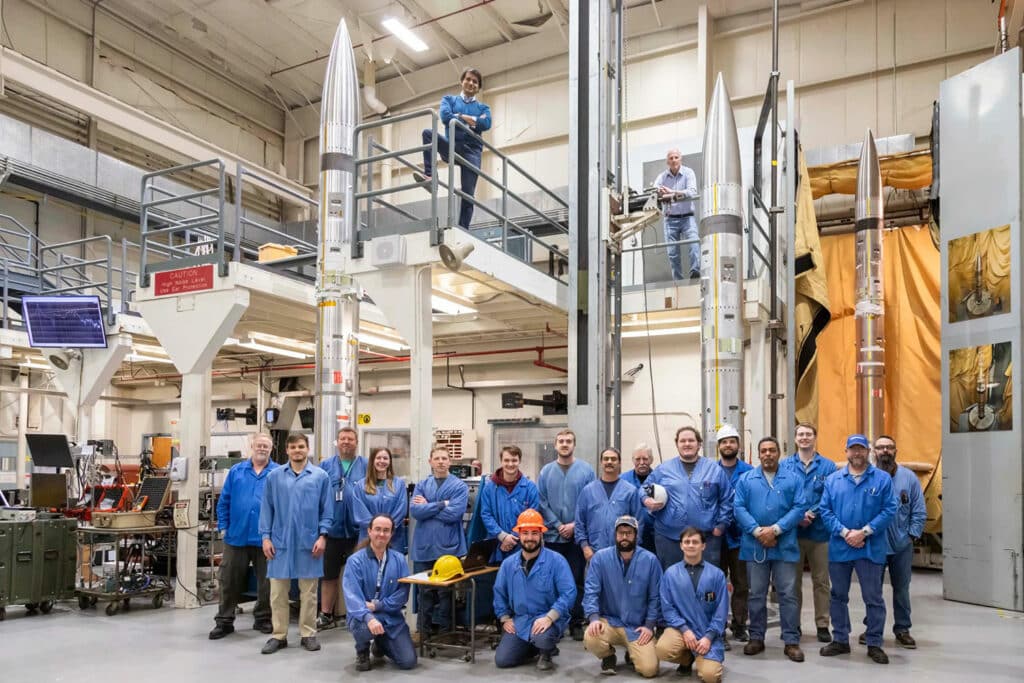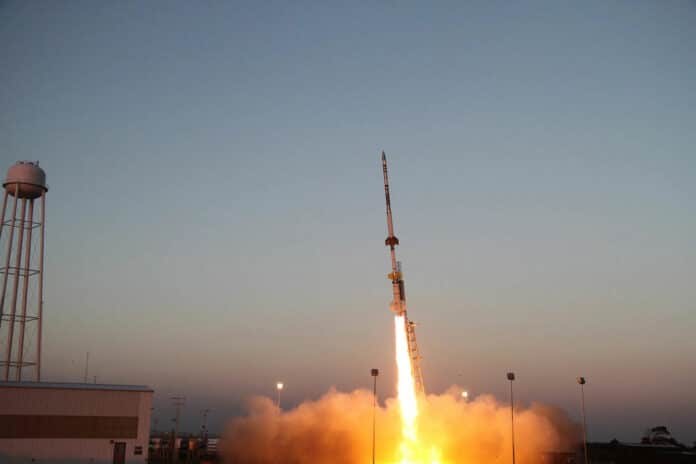NASA will be launching three sounding rockets during the total solar eclipse on April 8, 2024. These rockets will study how Earth’s upper atmosphere is affected when sunlight momentarily dims over a portion of the planet.
The mission, called Atmospheric Perturbations around Eclipse Path (APEP), will launch from NASA’s Wallops Flight Facility in Virginia.
The researchers aim to study the disturbances in the ionosphere created when the Moon eclipses the Sun. The sounding rockets had been previously launched during the October 2023 annular solar eclipse and have been refurbished with new instrumentation for the April 2024 launch.
The sounding rockets will be launched three times, specifically 45 minutes before, during, and 45 minutes after the peak local eclipse. Apparently, these intervals are significant in gathering data on how the ionosphere is affected by the abrupt disappearance of the Sun. The ionosphere is located between 55 to 310 miles (90 to 500 kilometers) above the Earth’s surface, where disturbances created by the eclipse have the potential to interfere with our communications.
“It’s an electrified region that reflects and refracts radio signals, and also impacts satellite communications as the signals pass through,” said Aroh Barjatya, a professor of engineering physics at Embry-Riddle Aeronautical University in Florida. “Understanding the ionosphere and developing models to help us predict disturbances is crucial to making sure our increasingly communication-dependent world operates smoothly.”
The ionosphere serves as the border between our planet’s lower atmosphere and the emptiness of outer space. It consists of a multitude of particles that become electrically charged, or ionized, due to the Sun’s energy, or solar radiation.
As night approaches, the ionosphere becomes less dense as the previously ionized particles calm down and reassemble into neutral particles. However, the ionosphere is a dynamic area that can be influenced by Earth’s atmospheric weather and space weather, making it difficult to predict its behavior at any given time.

It can be challenging to study the ionosphere during an eclipse using satellites since they may not be in the right position to cross the eclipse path. However, NASA can launch targeted sounding rockets during the exact date and times of the total solar eclipse to study the effects at all altitudes of the ionosphere.
During an eclipse, the shadow creates a rapid sunset that triggers large-scale atmospheric waves and small-scale disturbances. These disturbances impact various radio communication frequencies, and gathering data on them can help scientists validate and enhance current models that predict potential disturbances to our communications, particularly high-frequency communication.
The APEP rockets seem to be quite advanced and are expected to reach an impressive maximum altitude of 260 miles (420 kilometers). Each rocket is equipped to measure charged and neutral particle density, as well as the surrounding electric and magnetic fields.
During the 2023 annular solar eclipse, scientists launched APEP sounding rockets and observed a significant decrease in the density of charged particles as the shadow of the eclipse passed over the atmosphere. According to Barjatya, the perturbations were observed during the second and third rockets but not during the first rocket that was launched before the peak local eclipse.
The scientists are awaiting the relaunch of the rockets during the total eclipse to observe if the perturbations start at the same altitude and if their magnitude and scale remain consistent. This experiment presents a rare opportunity for scientists to collect crucial data as the next total solar eclipse over the contiguous U.S. is not scheduled until 2044.
